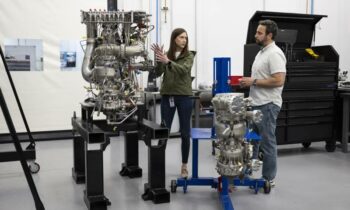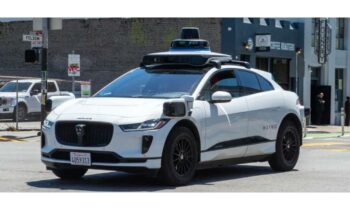On November 20th and 21st the world will see come to life the very first crypto NFT car show.
L-automobile.show I will be issuing approximately 8000 NFTs which will be used as tickets to access this incredible design and concept show.
Each NFT issued will comprise of a section of an image which when put together will make one of the 36 displayed vehicles at this incredible event. This is designed to make these NFTs very valuable and collectibles. Approximately 222 NFTs will be issued to complete each image of the cars in display.
“Just imagine collecting all 222 This will give you exclusive completed NFT of one of the exhibiting cars” . Said the spokesman from l-automobile.show
Not only would access be only with NFTs but crypto will be the only currency used at this event. This incredible new collaboration is obviously in the forefront of technology as we know today.
Below is the link for you to register free of charge to be able to be eligible to collect your NFT for access to the l-automobile.show
L-automobile.show are please to announce participation of Chryslers vintage division, showing for the first time in a long time the incredible 1963 Chrysler turbine of the ’60s which shocked the world with its concept design at that time.
L-automobile.show will consist of three categories.
Past concepts
Present concepts
Future concepts
Make sure you download your free tickets soon to secure your NFT to access this event
For more info please email info@supercarrooms.miami
About the 1963 Chrysler Turbine
In the 1950s and early 1960s, the Jet Age reached its peak in America. From sci-fi movies to heavily-stylized kitchen appliances, Americans were obsessed with jets, rockets, and space travel. Thanks in large part to designers like Harley Earl, American cars were heavily influenced by the world of aviation, first with the tail fins of the late 40s, later morphing into the wild looking afterburner-motif taillights, flight-deck inspired dashboards, and names likeJetfire, Rocket 88, andSatellite. But aside from the superfluous styling cues, advanced aviation technology also influenced the engineering departments of the big three. Chrysler emerged as a leader in adapting aerospace tech for the road. Their research into alternative power sources began before World War II, which led the US military to sponsor the development of a turboprop engine for aircraft. In the 1950s, Chrysler engineers capitalized on that experience and set about developing the gas turbine engine for automobile use. The turbine had a few shortcomings to making it ideal for use in an automobile, such as the lack of engine braking, high fuel consumption, high heat, and acceleration lag. But it had enormous potential thanks to its relative simplicity, near-silent operation, exceptional power-to-weight ratio, and low maintenance. Chrysler’s first successful track test came in 1954, followed by a 3,020-mile cross-country test, using a turbine-powered ’56 Plymouth sedan. That experience fueled a new generation of turbine engines that was more powerful, compact, and efficient than ever before. They followed that successful test with the wild-looking, Exner-designed Turboflite concept car, which toured the country to gauge public reaction to a gas-turbine automobile. With enthusiasm high, Chrysler announced in February 1962 that it would build approximately 50 turbine-powered cars for a public real-world test program. Styling was done in-house, overseen by the new design chief, Elwood Engel. Engel replaced Exner in 1961 and introduced a more sophisticated, slab-sided design language, which he honed while working at Ford – which explains the Turbine’s passing resemblance to a late 50s Ford Thunderbird. The jet-age motifs were more subdued than the wild fins and chrome of the Exner era, and the Turbine Car was understated yet distinctly elegant. To save on tooling costs, Chrysler contracted with their longtime partners Ghia in Turin, Italy, to build the body shells, which were then shipped to Michigan to mate with their bespoke chassis. All except one were painted a unique shade of bronze with a black vinyl roof and bronze interior. Fifty-five Chrysler Turbine Cars were built, encompassing five prototypes and 50 production cars. Chrylser opened the program to a nationwide pool of applicants who vied for a chance to drive one of the vehicles free of charge, for three months at a time over two years. It allowed Chrysler to compile massive amounts of data and priceless public relations from a relatively small pool of vehicles. After the highly publicized test program, all 50 cars returned to Chrysler for evaluation. Engineers crash-tested one prototype and, to prevent the remaining lot from becoming “used cars” and tarnishing the project’s image, consigned 45 of the remaining production cars to a Detroit scrapyard where they were summarily crushed and burned. While this seems appalling today, it is not uncommon for a manufacturer to destroy prototypes to protect their technology. Thankfully, one Chrysler exec came up with the idea of setting a few cars aside for static display in educational museums around the country. Nine were spared, including three retained by Chrysler. At the same time, six went respectively to the Museum of Transportation in Kirkwood, MO, The Henry Ford, The Smithsonian Institution, the Natural History Museum of Los Angeles (later the Petersen Automotive Museum), the Detroit Historical Museum, and the Harrah Collection Museum of Reno, NV.





